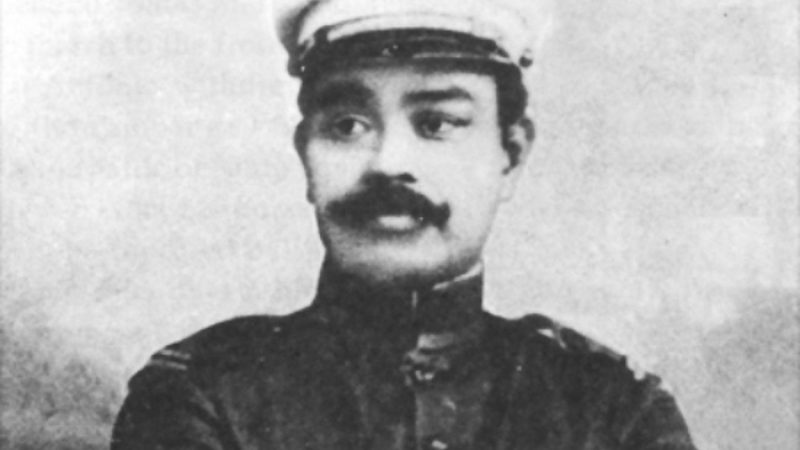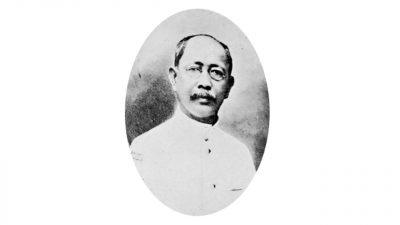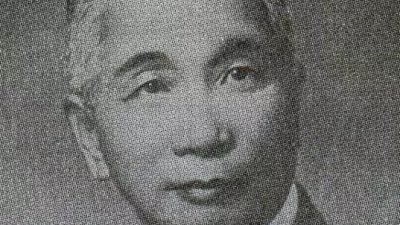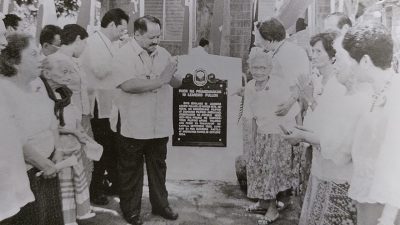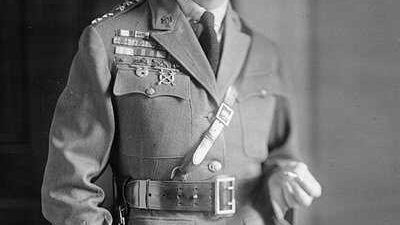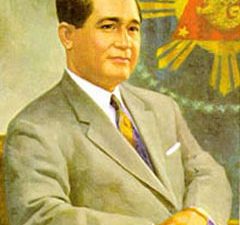On October 29, 1866, General Antonio Luna y Novicio, doctor of pharmacy, writer, patriot, and the greatest Filipino strategist during the Filipino-American War was born in Binondo, Manila.
He was the youngest of seven children of Joaquin Luna de San Pedro, from Badoc, Ilocos Norte, and Spanish mestiza Laureana Novicio-Ancheta, from Namacpacan (present-day Luna), La Union.
He initially studied at the Ateneo Municipal de Manila, receiving a Bachelor of Arts degree in 1881. He went on to study literature and chemistry at the University of Santo Tomas, where he won first prize for a paper in chemistry titled Two Fundamental Bodies of Chemistry. He also studied pharmacy, swordsmanship, fencing, and military tactics, and became a sharpshooter.
On the invitation of his brother Juan in 1890, Antonio was sent by his parents to Spain, to acquire a licentiate at the Universidad de Barcelona and a doctorate at the Universidad Central de Madrid in Pharmacy.
In Spain, he became one of the Filipino expatriates who mounted the Propaganda Movement and wrote for the La Solidaridad. He wrote a piece titled Impressions which dealt with Spanish customs and idiosyncrasies under the pen name “Taga-ilog”. Also, like many of the Filipino liberals in Spain, Luna joined the Masonry where he rose to being Master Mason.
Luna was active as a researcher in the scientific community. After receiving his doctorate, Luna published in 1893 a scientific treatise on malaria entitled El Hematozoario del Paludismo, which was favorably received by the scientific community. In recognition of his abilities, he was appointed commissioner by the Spanish government to study tropical and communicable diseases.
In 1894, he went back to the Philippines where he won the competition for chief chemist of the Municipal Laboratory of Manila, came in first, and won the position. He and his brother Juan also opened the Sala de Armas, a fencing club, in Manila.
Like other Filipino émigrés, Luna was in favor of reform rather than revolution as the way towards independence. When asked to join the Katipunan he turned down the offer. However, after the existence of the Katipunan was leaked in August 1896, Antonio and his brother Juan were suspected of “participating” in the revolution, arrested and both were jailed in Fort Santiago. Juan was freed, but Antonio was exiled to Spain in 1897, where he was imprisoned at the Cárcel Modelo de Madrid. He was later released through the intercession of his brother Juan.
After his release, he returned to the Philippines in late 1898. Carrying a letter of recommendation from Felipe E. Agoncillo, he offered his services to fight for the Filipino Republic. President Emilio Aguinaldo promptly put him at the head of several brigades of the Filipino army. General Luna saw the woeful conditions of the army and at once launched a massive recruitment program, taking in officers and soldiers from the defunct Spanish colonial army.
During the Filipino-American war, Luna was regarded as the most brilliant of the Filipino military officers. He organized professional guerrilla soldiers later to be known as the Luna sharpshooters. His three-tier defense, now known as the Luna Defense Line, gave the American troops a hard campaign in the provinces north of Manila.
On his birth anniversary in 1968, President Ferdinand Marcos, in a speech, said that Luna’s guerrilla tactics preceded that of China’s Mao Zedong and Vietnam’s Vo Nguyen Giap and Ho Chi Minh.
It was Luna who recommended to President Emilio Aguinaldo the creation of Academia Militar, the first military academy in the country.
By the end of May 1899, Colonel Joaquin Luna, one of Antonio’s brothers, warned him that a plot had been concocted by the “autonomists” of the Republic who were bent on accepting American sovereignty over the country, and a clique of army officers whom Luna had disarmed, arrested, and insulted. Luna shrugged off all these threats, reiterating his trust for Aguinaldo, and continued building defenses at Pangasinan where the Americans were planning a landing.
On June 4, 1899, Luna received a telegram “purportedly” signed by Aguinaldo, ordering him to come to the Aguinaldo headquarters at Cabanatuan, Nueva Ecija for a conference. General Luna set off with his main aides for the convent in Cabanatuan, Nueva Ecija where Aguinaldo was holding office.
In the afternoon, the following day, June 5, 1899, under the scorching sun, General Luna arrived at the convent, alighted from his carromata told his escorts, Colonel Francisco Roman and Captain Eduardo Rustica, to wait while he conferred with Aguinaldo. He went up the stairs of the convent and ran into an officer whom he had previously disarmed for cowardice and an old enemy whom he had once threatened with arrest. He was told that Aguinaldo had left for San Isidro in Tarlac. Enraged, Luna asked why he had not been told the meeting was canceled.
A single shot from a rifle on the plaza rang out. Outraged and furious, he rushed down the stairs and met Captain Pedro Janolino accompanied by some of the Kawit troops he had previously dismissed for insubordination during a battle. Janolino swung his bolo at General Luna, wounding him in the temple. Some soldiers in their party of Janolino fired at Luna, and others started stabbing him, even as he tried to bring his revolver to bear. He staggered out to the plaza where Colonel Roman and Captain Rustica were rushing to his aid, but they too, were set upon, shot again and again at close range while Luna, with his last breath, blood gushing from his multiple wounds, uttered his last imprecation, the worst he could think for any man, Cobardes, asesinos (Cowards, assassins).
From a window on the second floor of the convent, an old woman called down to the soldiers on the plaza, in Tagalog, “Is he dead yet ?”. According to some accounts, this old woman was Aguinaldo’s mother.
General Antonio Luna died at 33 years old.
On his death, his foes on the battlefield paid their highest tribute. General Hughes of the American Army, said, “The Filipinos had only one general, and they have killed him”.
American Civil Governor of the Philippines William Taft considered General Luna’s death a heavy blow against Filipino aspirations.
General Frederick Funston, who received the credit for capturing Aguinaldo at Palanan, Isabela, said that Luna was the “ablest and most aggressive leader of the Filipino Republic”.
For General James Franklin Bell, Luna “was the only general the Filipino army had”.
Luna and Francisco Roman were buried in Cabanatuan with full military honors corresponding to their rank.
In 1902 (or 1903), Luna’s body was exhumed by a certain Antonio Jimenez who described the remains as follows:
“I saw in the cranium two marks of two wounds inflicted with a bolo, one towards the posterior part two inches long, and the other towards the front which destroyed the cavity wherein was found the left eye. There were also two wounds more in the bones of the right arm that were well marked. I have also seen several holes in the cranium that possibly were the effects of bullets from a gun.”
Luna’s bones were entrusted to his brother Jose and have never been seen or heard of since.
Source: Pambansang Komisyong Pangkasaysayan A plot to kill a general, Philippine Star, October 27, 2008
Luna’s murder remains unsolved, Philippine Daily Inquirer, November 10, 2009
Photo credit: Wikipedia Commons
(JR AMIGO/AI/MNM)

